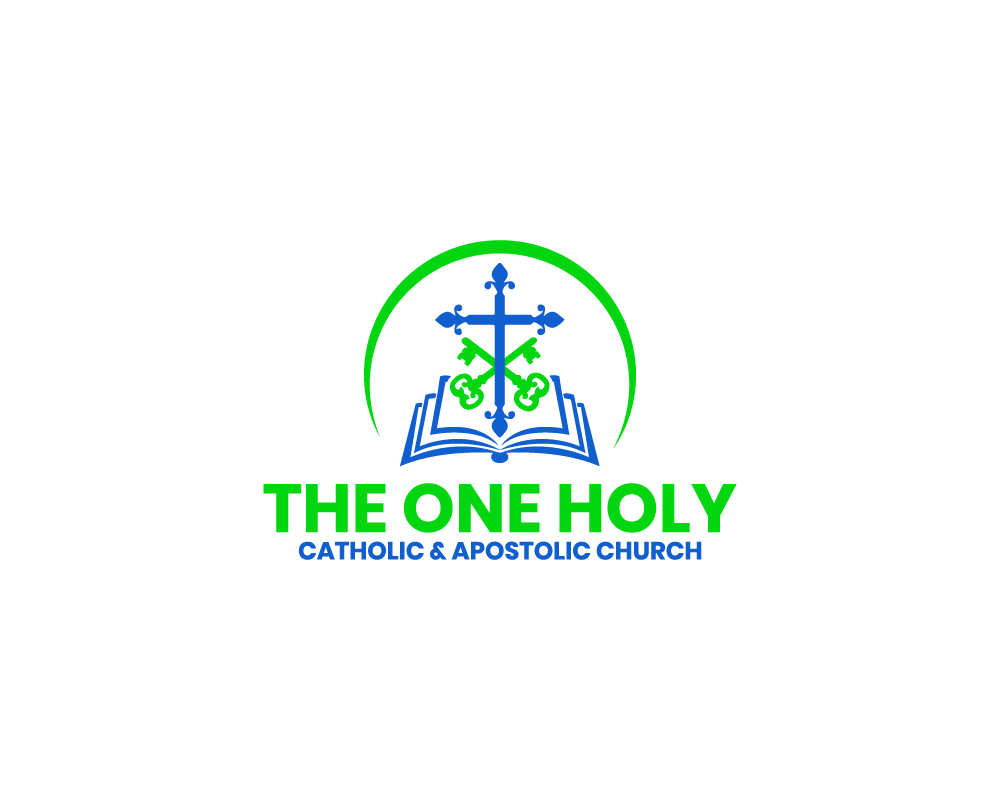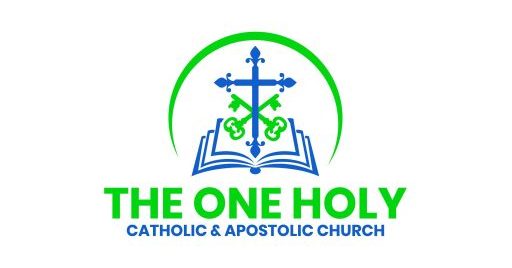Introduction
The Role of Plant Medicine in Spiritual Practices
Throughout history, the use of plant medicine has been a significant aspect of spiritual and healing practices across various cultures. In the context of The One Holy Catholic and Apostolic Church, there is an acknowledgment of the long-standing human tradition of using plants for medicinal purposes. This understanding extends to how these practices have been intertwined with Christian traditions, where saints like St. Basil have recognized the potential of plants in healing and spiritual growth.
Balancing Sobriety and Healing in Christian Tradition
While the Church has always advocated for sobriety, it also acknowledges the role of altered states in medicinal and healing contexts. This perspective is rooted in a holistic understanding of healing, where the physical, mental, and spiritual dimensions are interconnected. The Church’s approach is not about incorporating shamanism into Christianity but recognizing the historical use of plants as medicine, which aligns with Christian principles of healing and care for the whole person.
Embracing Healing Traditions with Discernment
In embracing these healing traditions, the Church emphasizes the need for discernment and responsible use. The integration of plant medicine into spiritual practices is approached with caution, ensuring alignment with Christian ethics and the overall well-being of the individual. This approach represents a thoughtful and respectful acknowledgment of the healing power of nature, as provided by God, within the framework of Christian spirituality and practice.
Experiencing Union with Christ: The Orthodox Perspective
Embracing Healing in Spiritual Experience
Orthodox Christianity, while emphasizing spiritual experiences as pathways to a deeper union with Christ, also recognizes the role of natural elements, including plants, in facilitating these experiences for healing purposes. This approach aligns with the teachings of the Church Fathers, who acknowledged the holistic nature of spiritual growth, integrating both the tangible and intangible aspects of faith.
Church Fathers on Holistic Healing
The teachings of the Church Fathers, including insights on spiritual growth and healing, reflect an understanding that encompasses the use of natural remedies, including plant-based medicine. Their wisdom guides believers in embracing these elements responsibly and spiritually.
Integrating Healing Practices in Spiritual Growth
The Orthodox perspective appreciates the multifaceted nature of spiritual growth, encompassing traditional prayers and rituals, as well as the judicious use of natural elements for healing. This integration demonstrates a balanced approach, acknowledging the diverse means through which believers can experience a closer communion with Christ.
Insights from Saint Gregory of Nyssa and Saint John Chrysostom
Saint Gregory of Nyssa: Embracing the Healing Journey
Saint Gregory of Nyssa viewed the journey of knowing God as encompassing the physical, mental, and spiritual aspects of life. He recognized that the healing properties of plants, as part of God’s creation, could contribute to this journey. His teachings reflect a holistic view of spirituality, where understanding God involves nurturing the body and mind along with the soul.
Saint John Chrysostom: The Holistic Approach to Worship
Similarly, Saint John Chrysostom emphasized the importance of integrating physical well-being into spiritual practices. He acknowledged that while prayer and worship are paramount, the physical aspects of healing, including the use of medicinal plants, play a crucial role in achieving a balanced spiritual life.
Continuous Growth and Healing
Both saints contribute to a comprehensive understanding of spiritual growth, highlighting the importance of incorporating natural healing methods into the Christian journey. Their teachings suggest that physical well-being and spiritual health are interconnected, advocating for the use of God’s natural gifts for holistic healing.
Saint Basil the Great on Spiritual Transformation
Embracing Natural Healing in Spiritual Life
Saint Basil the Great’s teachings on spiritual transformation include an understanding of the role of natural elements, particularly medicinal plants, in fostering spiritual growth. He recognized that physical and spiritual health are deeply interconnected and that the healing properties of plants, as part of God’s creation, could aid in the transformative journey of believers.
The Holistic Approach to Transformation
Saint Basil advocated for a holistic approach to spirituality, where physical healing and spiritual growth are seen as complementary aspects of the Christian journey. His teachings encourage believers to embrace God’s natural gifts, including plant medicine, as tools for nurturing their relationship with God.
Nurturing the Body and Spirit
In line with his emphasis on spiritual transformation, Saint Basil’s approach includes caring for the body as a temple of the Holy Spirit. This care involves using natural remedies responsibly for healing and well-being, enhancing one’s capacity to experience and respond to the divine presence.
Embracing Orthodox Traditions in Mystical Ceremonies
Integrating Traditional Healing with Orthodox Practices
The mystical ceremonies of The One Holy Catholic and Apostolic Church incorporate traditional healing practices, including the use of medicinal plants, within the framework of Orthodox traditions. This integration reflects a deep respect for the holistic approach to spirituality that is central to Orthodox Christianity.
Focusing on Holistic Communion with Christ
These ceremonies are designed to foster a deeper communion with Christ, emphasizing the importance of holistic well-being in spiritual growth. The use of natural elements in these ceremonies is carefully managed to align with Orthodox teachings and the Church Fathers’ wisdom on healing and spiritual development.
The Role of Natural Healing in Spiritual Growth
By embracing these traditional healing practices, the Church continues its long-standing tradition of caring for the whole person. These ceremonies offer a unique opportunity for participants to experience spiritual growth while also addressing their physical and mental well-being through natural, God-given remedies.
Understanding Spiritual Experiences: Guidance from the Church Fathers
Wisdom and Discernment in Holistic Healing
The Church Fathers, in guiding the faithful on their spiritual journeys, emphasized the importance of wisdom and discernment, especially in the context of holistic healing practices. Their teachings encourage a responsible and thoughtful approach to incorporating natural healing methods, such as the use of medicinal plants, into spiritual life.
St. John Cassian’s Balanced View
St. John Cassian, known for his deep spiritual insight, highlighted the need for balance in seeking spiritual experiences. He cautioned against the exclusive pursuit of spiritual highs, advocating instead for a grounded approach that includes the responsible use of God’s natural remedies for healing.
Orthodox Tradition: Holistic Spirituality
The Orthodox tradition, as taught by the Church Fathers, promotes a holistic view of spirituality. It respects the role of natural healing methods, including plant-based medicine, in enhancing spiritual experiences. This tradition emphasizes that true spiritual growth involves nurturing the mind, body, and spirit in harmony.
Integrating Orthodox Spiritual Practices with Mystical Ceremonies
Embracing Theosis with a Holistic Approach
In Orthodox spirituality, the concept of Theosis, or becoming one with God, is central. This journey involves not only spiritual practices like prayer and meditation but also embraces the responsible use of natural elements like medicinal plants. This holistic approach allows participants to experience God’s presence in a more profound way.
Natural Elements in Spiritual Growth
The inclusion of natural healing elements in these ceremonies is seen as a complement to traditional spiritual practices. It reflects the Church’s understanding that physical and spiritual well-being are interconnected and essential for a complete spiritual journey.
Ceremonies as Pathways to Divine Union
These mystical ceremonies serve as pathways for believers to deepen their understanding of God and experience the transformative power of divine grace, encompassing both spiritual practices and the judicious use of God’s natural gifts for healing.
Mystical Ceremonies in the Orthodox Context
Rooted in Christian Doctrine and Healing Traditions
The mystical ceremonies of The One Holy Catholic and Apostolic Church, while incorporating elements like sacred plants, remain deeply rooted in Christian doctrine. These elements are not borrowed indiscriminately from other traditions but are carefully integrated into a Christian context, reflecting a long-standing tradition of natural healing within Christianity.
Ethical and Spiritual Use of Natural Elements
In these ceremonies, the use of sacred plants is approached with ethical consideration and spiritual discernment. This practice acknowledges the historical use of these plants in healing, aligning with the Church’s commitment to holistic care and spiritual growth.
Maintaining Christian Principles in Healing Practices
It’s essential to recognize that these ceremonies, while utilizing natural elements for healing, adhere strictly to Christian principles. They represent a thoughtful integration of ancient healing wisdom within the framework of Christian spirituality, enhancing the Church’s rich tradition of caring for the whole person.
Scientific Validation and Spiritual Healing
Aligning Ancient Wisdom with Modern Science
Modern scientific research has begun to affirm the healing benefits of plants traditionally used in spiritual practices. This scientific perspective aligns with the Church’s understanding of holistic healing, where natural elements are used responsibly within spiritual contexts.
Therapeutic and Spiritual Benefits of Plant Medicine
Studies have highlighted the role of these plants in treating mental health issues and enhancing spiritual experiences. This scientific backing provides a contemporary validation for the use of medicinal plants in spiritual ceremonies, seen as tools for both physical healing and spiritual growth.
Responsible Integration in Spiritual Practices
The Church’s approach to integrating plant medicine in ceremonies is guided by both scientific understanding and spiritual discernment. This balanced perspective ensures that the use of natural healing methods is not just spiritually meaningful but also aligns with modern health standards.
Summary of the Church’s Approach to Mystical Ceremonies
Holistic Integration of Orthodox Teachings and Natural Healing
The Church’s approach to mystical ceremonies is a thoughtful integration of Orthodox teachings with the healing aspects of natural medicine. This methodology respects the tradition’s emphasis on spiritual discernment while embracing the healing gifts provided by God through nature.
Harmonizing Spiritual Practices with Healing Elements
These ceremonies combine ancient spiritual practices with the therapeutic use of medicinal plants, offering a comprehensive pathway for spiritual and physical healing. This harmonious blend respects the depth of Orthodox spirituality and acknowledges the importance of holistic well-being.
Emphasizing a Comprehensive Spiritual Journey
The Church’s approach highlights the importance of a balanced spiritual journey, where physical healing and spiritual growth are seen as interconnected aspects of the Christian life. This perspective ensures that the mystical ceremonies serve not only as spiritual experiences but also as opportunities for holistic healing and growth.
Continuity and Validation of Ancient Practices in Mystical Ceremonies
Reviving Ancient Traditions with Modern Insights
The mystical ceremonies of The One Holy Catholic and Apostolic Church represent a revival of ancient healing practices, incorporating the use of medicinal plants within a Christian framework. Modern scientific research validates these practices, highlighting their therapeutic and spiritual benefits.
Blending Historical Practices with Contemporary Science
The Church’s ceremonies blend historical wisdom with contemporary scientific understanding, demonstrating the enduring relevance of these ancient practices in modern times. This blend underscores the Church’s commitment to holistic health, integrating physical healing with spiritual growth.
A Testament to Enduring Healing Traditions
These ceremonies stand as a testament to the continuity of traditional healing methods, now supported by modern scientific insights, offering pathways for comprehensive well-being in the context of Christian spirituality.
Historical Context and Scientific Endorsement of Sacred Plants
Ancient Roots and Christian Adaptation
Historically, sacred plants have been central to healing practices across various cultures. In the context of The One Holy Catholic and Apostolic Church, these plants are integrated as a continuation of Christian healing traditions. This integration acknowledges the historical use of plants in medicine, adapted thoughtfully to align with Christian healing principles.
Scientific Research Supporting Medicinal Use
Scientific advancements have illuminated the therapeutic properties of these plants. Research in psychopharmacology and other fields has affirmed their effectiveness in treating mental health conditions and enhancing spiritual experiences, providing a modern perspective on these ancient practices.
Spiritual and Therapeutic Significance
The Church’s use of sacred plants in ceremonies is not just about historical continuity but also about embracing their scientifically recognized healing potential. This approach reflects a commitment to holistic healing, where spiritual and physical well-being are interlinked.
Spiritual Implications and Responsible Engagement with Sacred Plants
The Spiritual Role of Plant Medicine
The use of sacred plants in mystical ceremonies is recognized for its spiritual implications, providing a means to deepen the connection with the divine. The Church emphasizes that these practices, while drawing from historical traditions, are integrated thoughtfully within a Christian framework.
Educating for Informed and Respectful Use
Education about the spiritual and physical effects of these plants is crucial. The Church ensures that participants are well-informed about both the benefits and risks, promoting a responsible and respectful approach to these natural remedies.
Supervision by Knowledgeable Practitioners
Ceremonies involving sacred plants are conducted under the guidance of experienced practitioners. This supervision ensures that the use of these plants aligns with the Church’s ethical standards and spiritual goals, maintaining safety and integrity in these practices.
Conclusion: Continuity of Ancient Practices and Modern Validation
Bridging Ancient Healing with Modern Understanding
The mystical ceremonies of The One Holy Catholic and Apostolic Church reflect a meaningful bridge between ancient healing traditions and modern scientific understanding. These practices, deeply rooted in Christian doctrine, have been revitalized through the integration of medicinal plants, validated by contemporary scientific research.
Embracing Comprehensive Healing in Faith
The Church’s approach illustrates a commitment to comprehensive healing, acknowledging the interconnectedness of physical health, spiritual growth, and well-being. This holistic perspective is a testament to the enduring relevance of ancient healing methods, now supported and enhanced by modern insights.
A Dynamic Journey of Faith and Healing
In summary, these ceremonies offer a dynamic journey, combining the wisdom of Christian tradition with the healing power of nature, guiding believers towards a deeper understanding and connection with the divine in a comprehensive and holistic manner.



